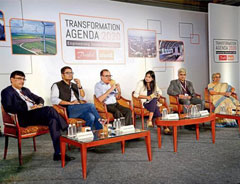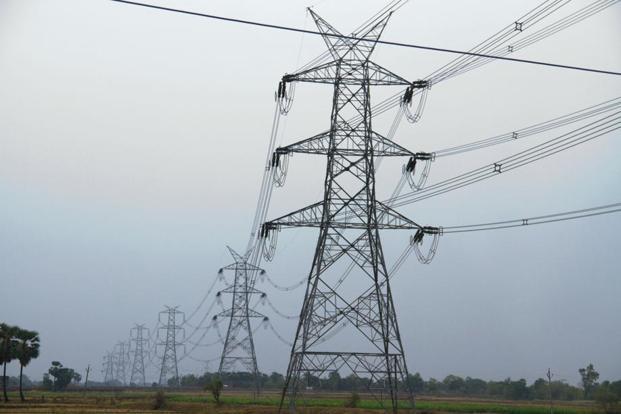
'Smart cities are not only about sensors and gadgets but also mobility, development, jobs'
There is no one-size-fits-all solution to challenges cities face today, said panellists at the 'Danfoss-Mint Transformation Agenda...
infrastructure« energy section pagePromotional content
It is important to educate consumers and spread awareness of various energy efficient options in the market that can help in optimizing electricity consumption to a great extent.

To meet the unprecedented demand and ensure energy security for sustainable economic growth, the introduction of new energy efficiency measures is a must. | Source: Mint
Energy consumption in India has gone up manifold in recent years and demand is expected to rise further due to speedy electrification (led by the government's Power for All and Saubhagya schemes), increase in household purchasing power, technology advancement, e-mobility prospects, industrial and agricultural advancements.
According to the ministry of power, in terms of tonnes of oil equivalent (TOE), energy demand in the country is expected to increase to about 1,250 million TOE (as per the integrated energy policy report ) to 1,500 million TOE (as per the International Energy Agency) by 2030.
Of the above, residential electricity consumption constitutes 24% of the total electricity consumption in India. In this sector, lighting and cooling requirements constitute 75% of the total household electricity consumption. Here, requirements are further projected to grow by 260% by 2021, according to World Bank estimates.
However, to meet the unprecedented demand and ensure energy security for sustainable economic growth, the introduction of new energy efficiency measures is a must.
It is important to educate consumers and spread awareness of various energy efficient options available in the market that can help in optimizing electricity consumption to a great extent.
One can achieve this through mass adoption of energy efficiency measures across the country such as demand side management, or DSM, (towards efficient lighting, cooling, heating, refrigeration), initiatives of energy service firms, demand response, roof-top solar, e-mobility and others.
The World Bank, in its report titled Utility scale DSM opportunities and business models in India, has pegged India's energy efficiency market at Rs1.6 trillion by considering end-use energy efficiency opportunities, which rose four times in six years from Rs44,000 crore in 2010, against the backdrop of the success of the government's UJALA scheme to distribute LED bulbs (Bachat Lamp Yojana).
Till now, more than 280 million light emitting diode (LED) bulbs have been sold across the country which has resulted in energy savings of 36,545 million units (MUs) and avoided peak demand of 7,317MW. In monetary terms, savings of around Rs14,618 crore have been achieved.
The report also recognized promotion of energy efficiency among consumers through initiatives and schemes such as incentives for adopting and manufacturing energy efficient appliances (Super-Efficient Equipment Programme), standards and labelling scheme, consumer outreach activities and voluntary building codes (energy conservation building code that has been made mandatory for commercial buildings). The report also mentions that the renewed DSM market potential is envisaged to deliver 178 billion units of electrical energy savings per annum that roughly translates to 18-20% of the current levels of all India annual electricity consumption and 150 million tonnes (mt) of annual CO2 emissions reduction potential.
Apart from this, demand response, solar photovoltaic (SPV) rooftop systems, along with emerging smart grid technologies, offer tremendous potential for utility DSM in India. The market potential for rooftop SPV systems in India is 124 GWp and a realistic national demand response potential is yet to be evaluated in a comprehensive manner.
The street light national programme (SLNP) of the government has also been appreciated far and wide.
Under the programme, more than 35 million conventional street lights will be replaced with energy efficient LED lights. This would result in annual energy savings of 9 billion units and the total cost savings of municipalities every year will be around Rs5,500 crore.
However, despite many efforts to foster energy efficiency in the sector, much remains to be achieved. To add to this, a lack of awareness, inability to assess lifetime benefits, high upfront costs, uncertainty associated with energy savings, and costs of the decision are some of the roadblocks challenging market penetration of energy efficiency.
Effective strategies and plans are required to address these issues primarily at the distribution company (discom) level and they should be considered integrated partners in the overall value chain of energy efficiency programmes of governments both at the centre and states.
Discoms are immediate touch points for customers and have valuable data pertaining to electrical energy consumption and consumption pattern and load profile. Considering this, proactive discoms can play a critical role in impact analysis of the DSM programmes through proper measurement and verification and facilitation between customers and implementing agencies.
Today, a lot of effort is being put in by the discoms in India as access to energy efficient services is the need of the hour and is essential for the overall economic development and makes entrepreneurial activities beyond daylight hours possible.
Energy efficiency enables enhanced productivity and helps in keeping global warming under two degrees Celsius above pre-industrial levels.
Every unit of energy saved, either on account of technological advancement or behavioural change, implies two units do not need to be produced because of overall inefficiency in the system. The collective efficiency measures can also positively impact discoms' future load growth management.
In this scenario, Delhi leads by example in terms of spreading awareness among its consumers on energy efficiency.
For instance, an appliance exchange programme is one of the schemes initiated by Tata Power-DDL wherein it offers consumers a substantial rebate (to the tune of 40-50%) on replacing old inefficient appliances with new BEE (Bureau of Energy Efficiency) five-star rated ones. One such scheme was a rebate-based air conditioner replacement programme under which around 17,150 non-star rated air conditioners have been replaced, which led to a load reduction of 11.66MW and deemed savings of 10.49 MUs annually. This would have an environmental impact of reducing 3,494 mt of CO2 annually. However, the programme has remained at pilot-scale (20,000 units sold till date) as scaling up will require significant budget outlays.
Discoms in the country should promote demand side management as a strategic tool to meet demand growth, to enhance national energy security by reducing the dependency on expensive import of coal; deferring high investment to set up new power plant transmission and distribution networks; improvement in network reliability; reducing carbon footprints by using polluting coal, thereby helping in reduction in consumers bills and adverse environmental impacts.
To achieve energy efficiency goals, several loose ends need to be tied up—like cross-subsidized electricity prices leading to wastage in residential and agricultural sectors; limited information about the benefits of energy efficiency investments and technologies; lack of enforcement of standards, codes, and labelling; difficulty of measuring 'megawatts' (or efficiency savings) in the context of project cash flows; asymmetric risk/reward distributions (mostly in the building sector for owner/investors versus tenants); competing objectives in complex planning situations involving new investments and development; inadequate investment in supportive institutional mechanisms and human resources; high transaction costs from legal, technical, and transactional complexities, like non-standardized deal structures and substantial technical content of project appraisal, development, and monitoring, etc. Also the micro small and medium enterprises sector is one of the most important segments where overall energy consumption is quite high due to system inefficiency and less technology intervention. As the sector is not organised, energy efficiency implementation and compliance are a major challenge due to a lack of interest among ESCO agencies, lack of awareness, lack of capital for upfront cost and lack of baseline data.
I am of the view that out of various initiatives towards energy saving, BEE's Standards and Labelling Programme is a critical one as it is designed to provide consumer an informed choice about the energy saving and thereby the cost saving potential of the relevant marketed product. The scheme targets display of energy performance labels on high energy end use equipment & appliances and lays down minimum energy performance standards. Discoms can play an important role in educating customers about it and facilitating the availability of star labelling equipment at affordable price.
Perform Achieve and Trade Scheme (PATS) is also a significant initiative. As a component of the National Mission for Enhanced Energy Efficiency (NMEEE), PATS serves as a regulatory instrument to reduce specific energy consumption in energy intensive industries, with an associated market-based mechanism to enhance cost effectiveness through the certification of excess energy savings which can be traded. This is showing positive results.
The ministry of power's energy saving certificates (ESCerts) are also an impactful tool. The ESCerts could be traded at two energy exchanges—that is Indian Energy Exchange (IEX) and Power Exchange India Ltd (PXIL)—or bought by other units under PATS to meet compliance requirements. Units that are unable to meet the targets either through their own actions or through purchase of EScerts are liable to financial penalty under the Energy Conservation Act.
I believe the learning from the above mentioned schemes should be used to scale up the future DSM schemes and encourage consumer behaviour towards energy efficiency as it is imperative to change the trend of rapidly rising energy consumption levels from an energy security point of view. We also need to build a self-sustainable market for commercial and industrial segment so that they can maximize the benefit using energy efficient machines/appliances with minimum cost or paying the solution provided from the energy savings.
Lastly, on the environmental front, energy efficiency measures are a key strategy to meet India's low carbon development commitments (viz. to reduce the emissions intensity of GDP by 33% to 35% by 2030 and to achieve about 40% cumulative electric power installed capacity from non-fossil fuel-based energy resources by 2030) in the newly emerging global framework for combating climate change (UN Paris Agreement signed by 175 countries). The role and significance of these measure in achieving the commitments must be clearly formulated and integrated with other sustainability actions, plans and policies at the centre and state levels.
Praveer Sinha is managing director, Tata Power Delhi Distribution Co.
